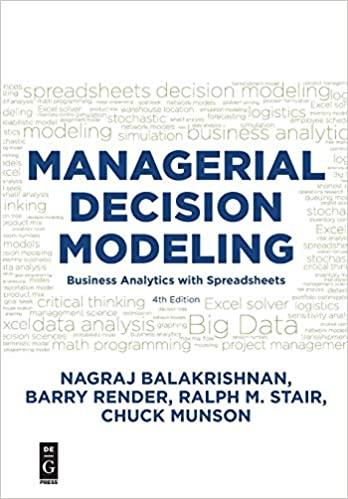Question: DETERMINING PERFORMANCE MEASURES
8-37 Nonfinancial and non-manufacturing variances. Belle's Treats produces high-quality dog food distributed only through veterinary offices. To ensure that the food is of the highest quality and has taste appeal, Belle has a rigorous inspection process. For quality-control purposes, Belle has a standard based on the number of kilograms inspected per hour and the number of kilograms that pass or fail the inspection. Belle expects that for every 10,000 kilograms of food produced, 1,000 kilograms of food will be inspected. Inspection of 1,000 kilograms of dog food should take 1 hour. Belle also expects that 2% of the food inspected will fail the inspection. During the month of May, Belle produced 2,250,000 kilograms of food and inspected 200,000 kilograms of food in 210 hours. Of the 200,000 kilograms of food inspected, 3,500 kilograms of food failed to pass the inspection. Required 1. Calculate two variances that help determine whether the time spent on inspections was more or less than expected. (Follow a format similar to the one used for the variable overhead rate and efficiency variances, but without prices.) 2. Calculate two variances that can be used to evaluate the percentage of the food that fails the inspection.8-36 Review of Chapters 7 and 8, three-variance analysis. (CPA, adapted) Beal Manufacturing Company's costing system has two direct cost categories: direct materials and direct manufacturing labour. Manufacturing overhead (both variable and fixed) is allocated to products on the basis of standard DMLH. At the beginning of 2022, Beal adopted the following standards for its manufacturing costs: Cost per Input Output Unit Direct materials 3 kg at $5 per kg $ 15 Direct manufacturing labour 5 hours at $15 per hour 75 Manufacturing overhead: Variable $6 per DMLH 30 Fixed $8 per DMLH 40 Standard manufacturing cost per output unit $160 The denominator level for total manufacturing overhead per month in 2022 is 40,000 DMLH. Beal's flexible budget for January 2022 was based on this denominator level. The records for January indicate the following: Direct materials purchased 25,000 kg at $5.20/kg Direct materials used 23,100 kg Direct manufacturing labour 40,100 hours at $14.60/hour Total actual manufacturing overhead (variable and fixed) $600,000 Actual production 7,800 output units Required 1. Prepare a schedule of total standard manufacturing costs for the 7,800 output units in January 2022. 2. For January 2022, calculate the following variances, indicating whether each is favourable (F) or unfa- vourable (U): a. Direct materials rate variance, based on purchases b. Direct materials efficiency variance c. Direct manufacturing labour rate variance d. Direct manufacturing labour efficiency variance e. Total manufacturing overhead rate variance f. VMOH efficiency variance g. Production-volume variance








